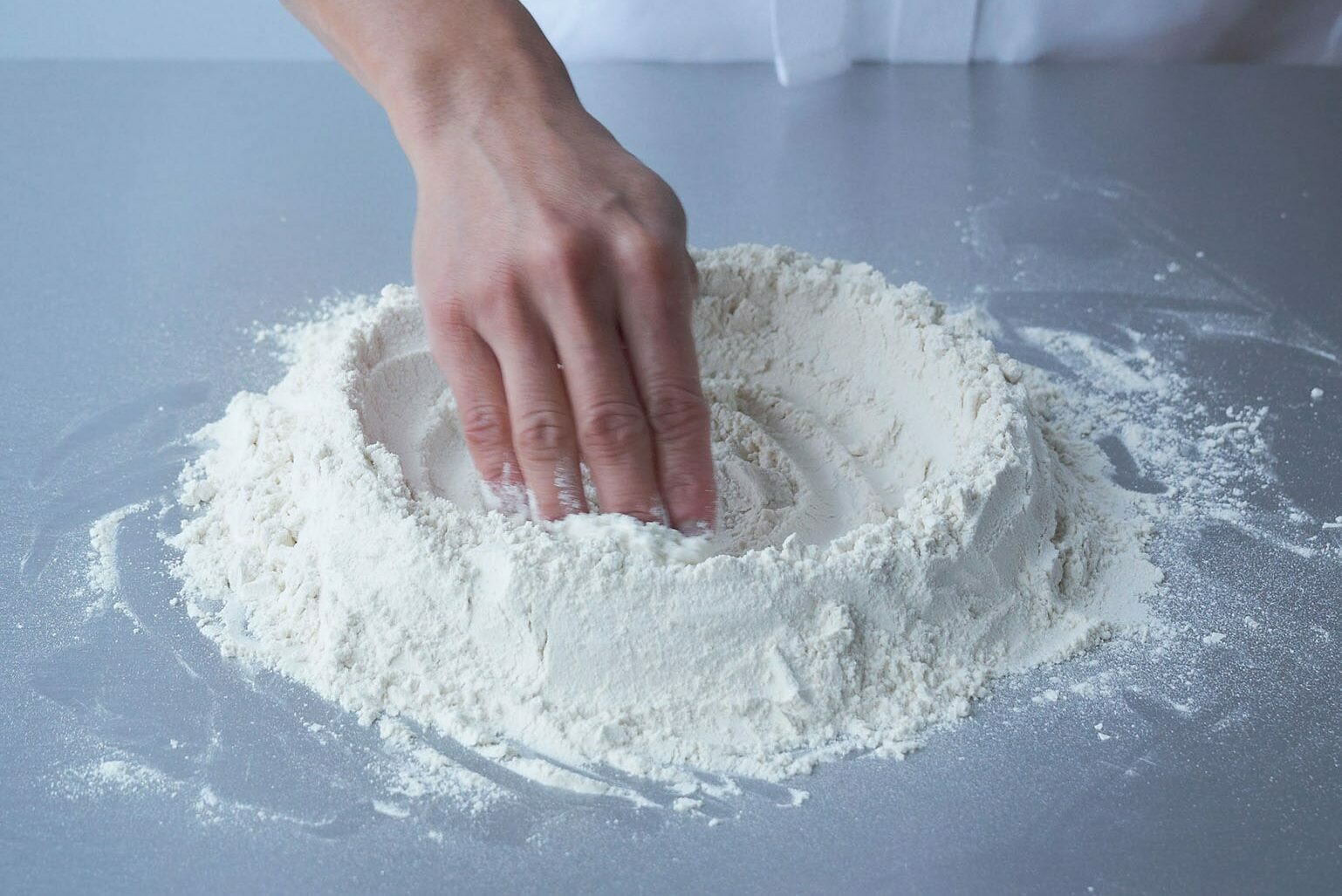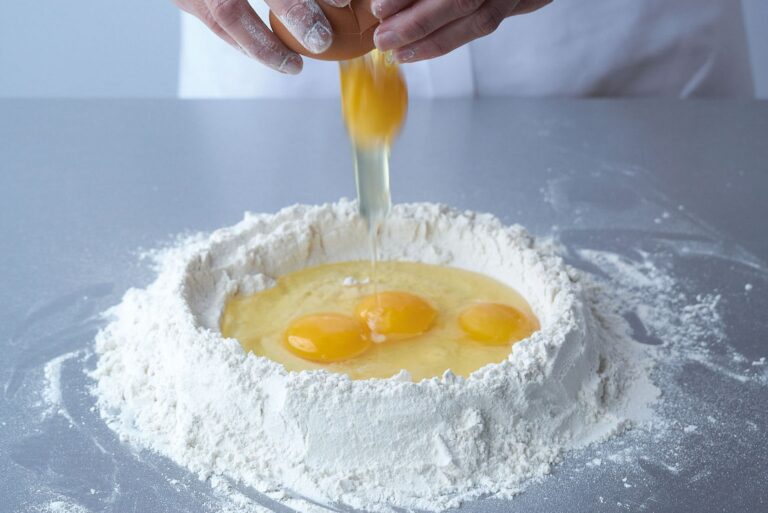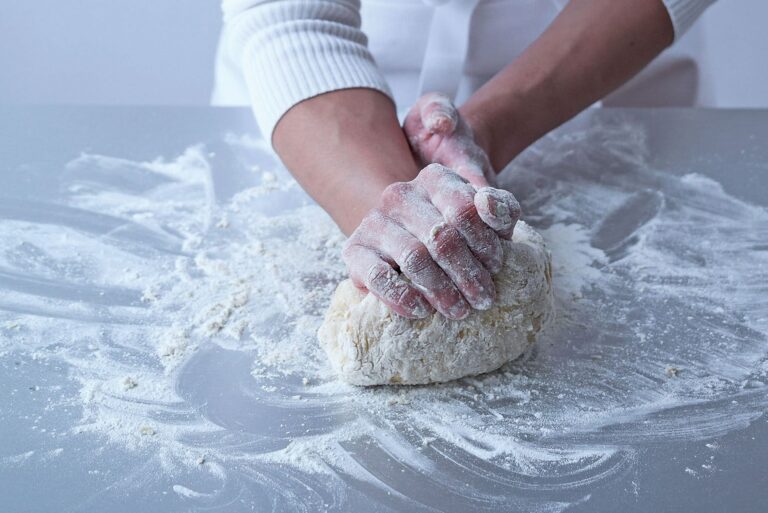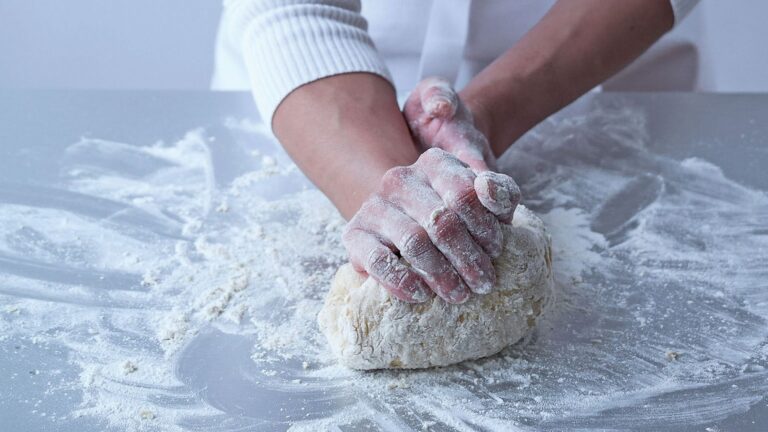We use whole eggs in our pasta for general purpose use. For a richer flavour, silky smooth texture and more vibrant colour, use only egg yolks or a combination of whole eggs and yolks (2 yolks for 1 whole egg). No salt is added to pasta as it absorbs moisture and can give the pasta a speckled appearance. Salt added to the cooking water will be absorbed by the pasta as it cooks.

1. Making a well in the flour.

2. Breaking the eggs into the well.

3. Combining the eggs and oil, and gradually drawing in the flour.

4. Incorporating the flour into the eggs and oil to form the dough.

5. Kneading the pasta dough.

6. The fully kneaded smooth and elastic dough, ready to be rested before rolling out.
A note on ‘00’ pasta flour…
Type ‘00’ pasta flour is a high gluten/high protein flour that is milled to a much finer texture than most flours (the fine milling is indicated by the ‘00’), resulting in a silky, smooth pasta texture.
Making pasta in a food processor
Put the flour, eggs and olive oil in the food processor bowl and switch the machine on. The ingredients will create a coarse crumb as the flour absorbs the eggs and oil. Switch off, take a little of the crumb between your fingertips and work it into a dough. If the crumb comes together quite easily, is firm and a little tacky, not too dry and stiff and not sticky, then tip it onto a lightly floured surface and knead into a dough.
If the dough is very stiff and dry looking, then add more beaten egg, about a quarter of an egg at a time, pulsing the mixture and checking the consistency after each addition. If the dough is very soft and sticky, add about 1 tbsp flour at a time until you achieve the correct consistency.
Ingredients
Instructions
Serves 4
400g ‘00’ pasta flour, plus extra to dust
4 large eggs
1 tbsp olive oil
- Sift the flour onto a clean work surface and make a well in the centre.
- Break the eggs into the well and add the olive oil; the well will hold the eggs and oil.
- Using the fingers of one hand, combine the eggs and oil, gradually drawing in the flour.
- Continue until you have a firm, rather than wet and sticky, dough; you will not need to incorporate all the flour. Scrape aside any leftover flour to prevent it from making the dough stiffer.
- Lightly flour a clean surface. Turn the dough onto it and start to knead it.
- Continue to knead until the dough is smooth and elastic, about 5 minutes. Wrap the dough well in cling film and leave it to relax in a cool spot in the kitchen (not the fridge) for at least 45 minutes and up to 2 hours.
Note The longer the pasta rests the easier it will be to roll out. It is possible to make a quick pasta that only rests for 15 minutes, but the texture will not be quite as silky. It can be rested overnight in the fridge, but needs to be transferred to a cool room temperature 20 minutes before rolling out.
